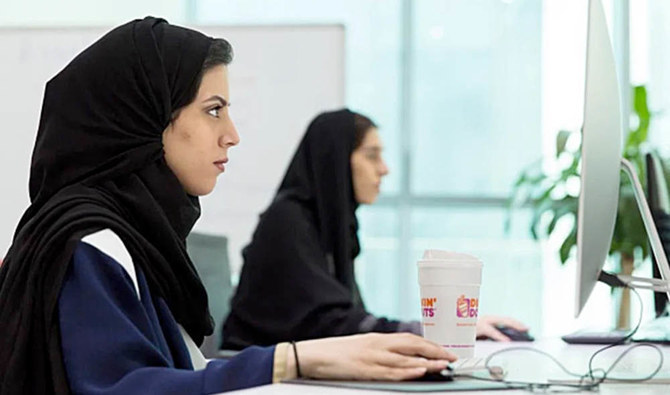
- ARAB NEWS
- 02 Jul 2025

RIYADH: Saudi Arabia’s economy is poised to benefit from the increasing number of working women as the Kingdom’s Vision 2030 initiative, aimed at enhancing female employment, has begun to demonstrate its potential economic impact, as outlined in a recent report by S&P Global.
The study showed significant progress in expanding the female workforce in Saudi Arabia, reaching 36 percent of the total human capital in 2022, up from 19 percent in 2016, surpassing Vision 2030’s target of 30 percent by the end of the decade.
This growth in the participation of women in the labor market can be attributed to various factors, including improved access to education, declining fertility rates, and a more inclusive cultural environment.
This comes as educational attainment has improved significantly in Saudi Arabia, with nearly 32 percent of women aged 25 and above holding at least a bachelor’s degree in 2020, compared to 26 percent in 2017.
The increase in female workforce has contributed to raising the overall employment participation rate in Saudi Arabia to a record high of 61.7 percent in March 2022, up from the 54.2 percent recorded in June 2017.
If the current pace of labor force participation growth continues for the next decade, S&P Global Ratings Economics estimates that the Saudi economy could potentially be $39 billion, larger by 3.5 percent. It made the comparison against a hypothetical scenario with historical labor force participation rate growth recorded during 2000-2022.
“We calculate that increases in the overall participation rate of just 1 percentage point per year over the next 10 years would boost the country’s annual real GDP (gross domestic product) growth by an average of 0.3 ppt, to 2.4 percent per annum (versus 2.1 percent), assuming that labor force productivity growth for the next 10 years will look the same as the last 20 years,” S&P Global said in the report.
Women’s wealth transforming region
Meanwhile, a new study released by the First Abu Dhabi Bank and WealthBriefing has suggested that the rise in women’s wealth is transforming the economies in the Middle East and North Africa region.
The report, titled “Winning Women in MENA: How Wealth Managers Can Help Further Female Empowerment,” attributed the rise in women’s economic role in the region to advancements in technology and the startup culture.
It revealed that the Middle East, particularly Saudi Arabia, has seen a surge in women entrepreneurs, with one out of three new businesses in the region now founded by women.
The report underscored that women are efficient in managing family businesses and often make more diversified and less emotionally driven investment decisions.
Samira Zakour, managing director at FAB, said: “Over the past 20 years I have seen a lot of women rise to the forefront of large family businesses in the region. There is plenty of research showing that women listen to a variety of opinions before deploying capital and that often leads to less emotional investing and, potentially, to better returns.”
According to the report, women have the capacity to bring a new point of view to managing a family’s wealth, as they have a different understanding to identify new opportunities, while also possessing ‘soft’ skills to negotiate complex relationships between family members.
It highlighted that tertiary education among women in the MENA region reached 43 percent in 2019, surpassing the global average of 36 percent and outperforming the male average of 40 percent worldwide.